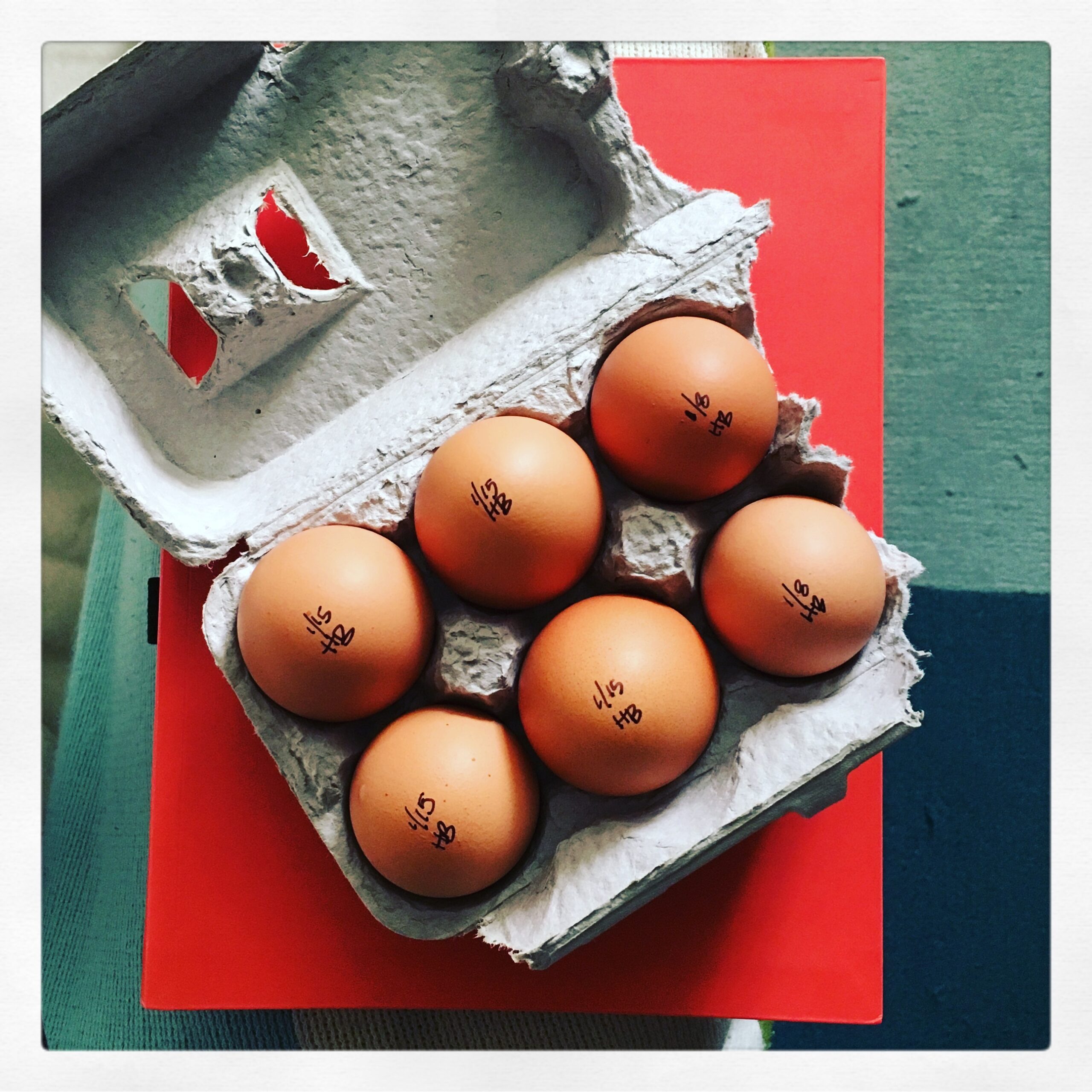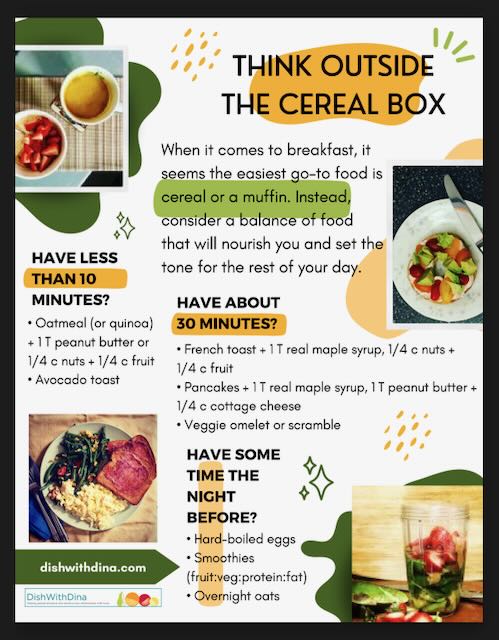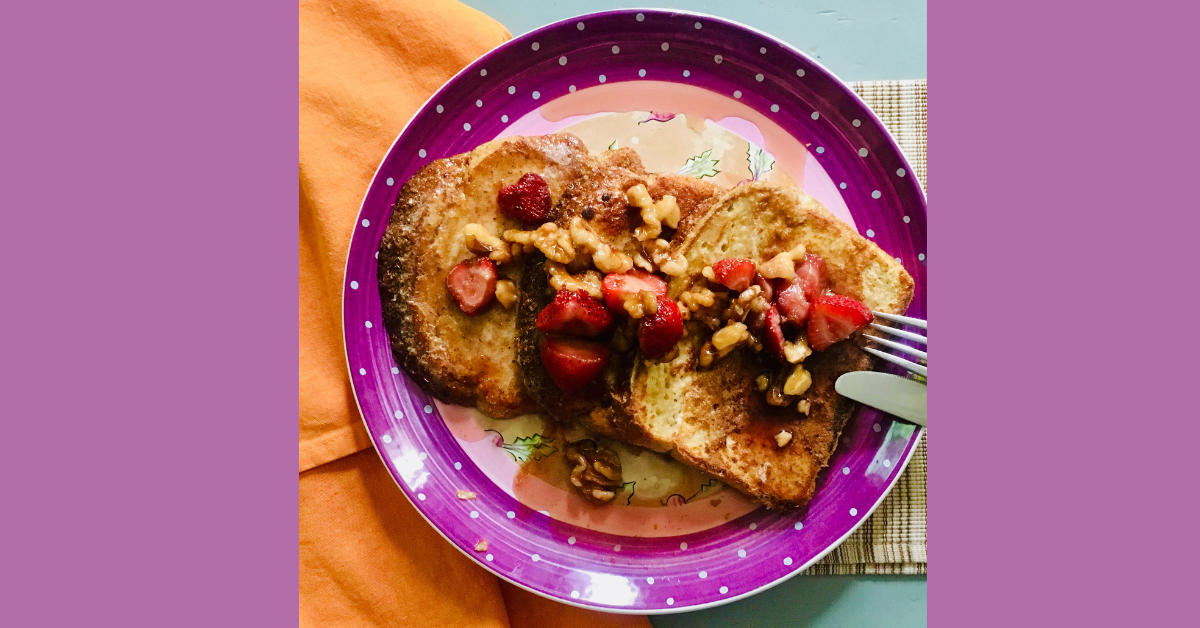Discover the role of breakfast in maintaining energy, metabolism, and focus throughout the day. Explore creative, nutrient-packed alternatives to start your morning right.
Breakfast has long been heralded as the most important meal of the day, but what does that really mean? Whether you’re grabbing a bite at sunrise or sitting down to a meal later in the morning, your first meal plays a key role in jumpstarting metabolism, boosting energy, and setting the tone for the day ahead. In my 2018 blog post, Think Outside the Cereal Box, I explored creative breakfast alternatives, and today, I’m diving deeper into why breakfast matters and how to make it work for you.
One of the things I tell all of my patients is to “front-load your calories”. Too often, people tend to rush out the door, onto work or school, not realizing that they’re doing a disservice to their body and brain. Eating a heartier meal earlier in the day has been shown to improve concentration and productivity. Consuming more calories in the morning can also reduce hunger later in the day, leading to healthier food choices and portion control at lunch and dinner, which may assist in stabilizing blood sugar levels and avoiding energy crashes that can hinder performance during important meetings or classes.
I don’t necessarily agree with any one rule about eating x-number of minutes after waking up, but I do believe that skipping breakfast (or whatever you want to call your first meal) can lead to nutritional deficiencies, adverse health outcomes, and making mindless choices due to extreme hunger later in the day. According to Statista and the NIH, over 25% of adults in the United States reported not eating breakfast, and around 15% of children and adolescents skipped breakfast regularly.
Balanced Breakfast Options
Recent studies have shown that regular breakfast consumption can have an impact on overall health, specifically decreasing the risk of type 2 diabetes—since insulin sensitivity appears to be higher in the morning than other times of day—and conditions associated with metabolic syndrome (increased blood pressure, excess body fat, abnormal cholesterol). Additionally, since protein increases satiety, starting your day only with carbs—especially if high in simple sugars—may work to your disadvantage, leaving you ravenous before you even get to the office or run your first errand.
Depending on the day of the week, the weather, or your energy—as well as your individual dietary needs—there are ways to be creative while still also including nutrient-dense ingredients such as whole grains, proteins, and healthy fats. Whether you’re following a traditional American diet or honoring your cultural foods, check out some of the ideas below to kickstart your morning:
- Dutch Baby Pancakes: A fluffy, oven-baked pancake that puffs up beautifully. Top with fresh fruits like berries or apples, a sprinkle of powdered sugar, and a drizzle of syrup. It’s an impressive yet easy-to-make breakfast.
- Shakshuka with Mini Meatballs: A North African/Middle Eastern dish of poached eggs in a spicy tomato sauce. Add mini meatballs for extra protein and serve with feta, avocado, and cilantro on top. This flavorful dish is perfect with a slice of toasted bread for dipping.
- Smoked Salmon & Scrambled Eggs: A twist on the American classic. Pair creamy scrambled eggs with smoked salmon for a rich, savory breakfast. Serve with whole grain toast or bagels and a side of pickled veggies for a satisfying morning meal.
- Leftover Stir-Fry Breakfast Bowl: Repurpose last night’s stir-fry by reheating it with a fried egg on top. Add some fresh greens like spinach or arugula, and drizzle with a bit of soy sauce or sriracha for an easy, nutrient-packed breakfast.
- Shrimp and Grits: A classic Southern breakfast dish, shrimp and grits is creamy, comforting, and savory. Season the shrimp with garlic, lemon, and spices, then serve over warm, cheesy grits for a hearty meal.
When preparing meals, a good rule of thumb is that 100 calories should give you enough energy to last about an hour. In the case of breakfast, for example, something like a bowl of oatmeal with a tablespoon of peanut butter added will total approximately 300 cals, so you shouldn’t feel yourself getting hungry again until about three hours later; a single hard-boiled egg, on the other hand, will only provide you with 70 cals and might be better as a grab-and-go snack until you can eat something more substantial.

Advocacy for the Underserved
Having access to breakfast—or any meal, for that matter—is a privilege. At DishWithDina, we advocate for equity and security when it comes to quality food and nutrition. If you’re interested in learning more about local and national programs that provide breakfast to underserved communities:
- Meals on Wheels America: This national organization delivers meals, including breakfast, to seniors and other vulnerable populations across the country. Many local chapters provide breakfast as part of their offerings.
- No Kid Hungry: This campaign provides funding and support for school breakfast programs and mobile meal delivery services aimed at children from low-income families.
- The Salvation Army: Through its various centers across the U.S., the Salvation Army offers free meal programs, including breakfast, for the homeless and those in need.
- Local School Breakfast Programs (like this one in NY): Schools across the U.S. participate in the USDA’s School Breakfast Program (SBP), which provides free or reduced-price breakfast to eligible children. Search online for ones near you.
Download our FREE breakfast handout:

Resources & References
- ncbi.nlm.nih.gov – Eat or Skip Breakfast? The Important Role
- sciencedirect.com – Breakfast: The most important meal of the day?
- researchgate.net – Importance of not skipping breakfast: a review
- rachaelhartleynutrition.com – The Joy of Eating
- successstudiopt.com – Is Breakfast Really the Most Important Meal of the Day?



0 Comments